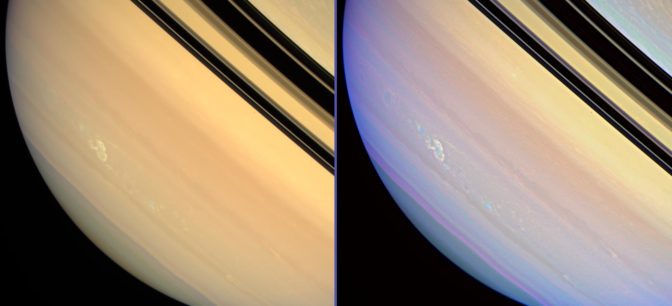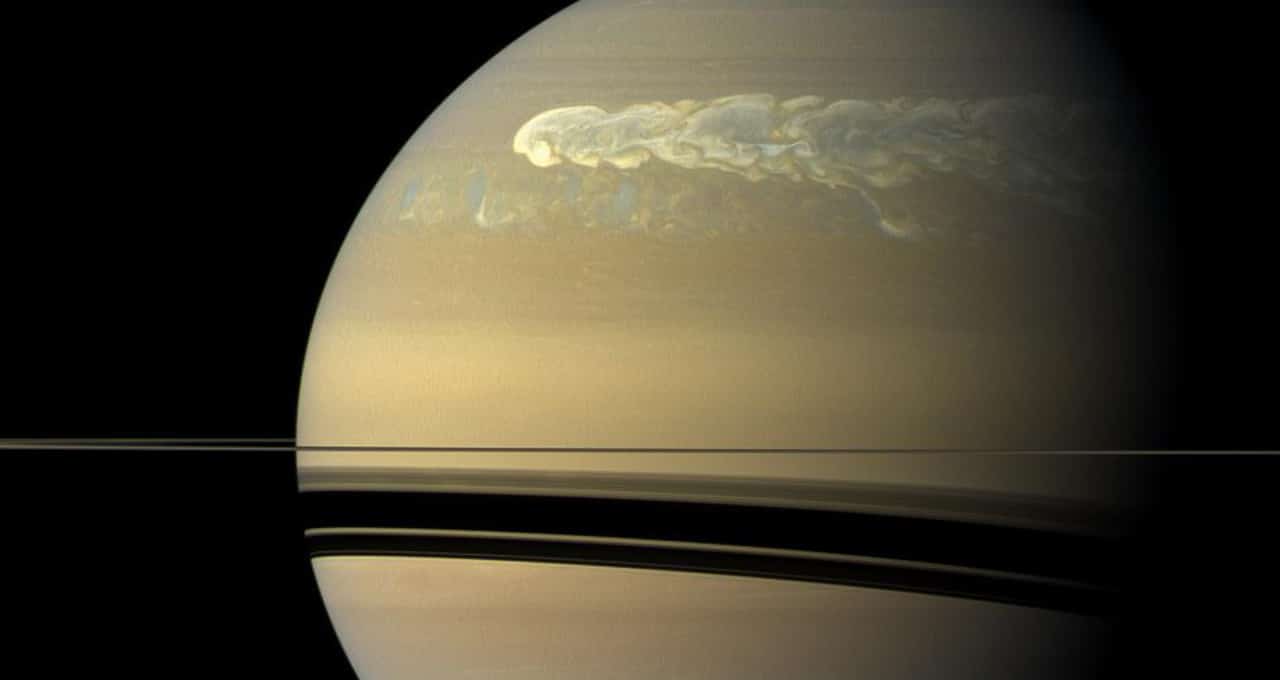Saturn is many times the size of Earth, so it’s only natural that its storms are more massive — lasting months, covering thousands of miles, and producing lightning bolts thousands of times more powerful.
While scientists have access to galaxies of data on these storms, its sheer volume leaves traditional methods inadequate for studying the planet’s weather systems in their entirety.
Now AI is being used to launch into that trove of information. Researchers from University College London and the University of Arizona are working with data collected by NASA’s Cassini spacecraft, which spent 13 years studying Saturn before disintegrating in the planet’s atmosphere in 2017.
A recently published Nature Astronomy paper describes how the scientists’ deep learning model can reveal previously undetected atmospheric features on Saturn, and provide a clearer view of the planet’s storm systems at a global level.
In addition to providing new insights about Saturn, the AI can shed light on the behavior of planets both within and beyond our solar system.
“We have these missions that go around planets for many years now, and much of this data basically sits in an archive and it’s not being looked at,” said Ingo Waldmann, deputy director of the University College London’s Centre for Space Exoplanet Data. “It’s been difficult so far to look at the bigger picture of this global dataset because people have been analyzing data by hand.”
The researchers used an NVIDIA V100 GPU, the most advanced data center GPU, for both training and inference of their neural networks.
Parting the Clouds
Scientists studying the atmosphere of other planets take one of two strategies, Waldmann says. Either they conduct a detailed manual analysis of a small region of interest, which could take a doctoral student years — or they simplify the data, resulting in rough, low-resolution findings.
“The physics is quite complicated, so the data analysis has been either quite old-fashioned or simplistic,” Waldmann said. “There’s a lot of science one can do by using big data approaches on old problems.”
Thanks to the Cassini satellite, researchers have terabytes of data available to them. Primarily using unsupervised learning, Waldmann and Caitlin Griffith, his co-author from the University of Arizona, trained their deep learning model on data from the satellite’s mapping spectrometer.
This data is commonly collected on planetary missions, Waldmann said, making it easy to apply their AI model to study other planets.
The researchers saw speedups of 30x when training their deep learning models on a single V100 GPU compared to CPU. They’re now transitioning to using clusters of multiple GPUs. For inference, Waldmann said the GPU was around twice as fast as using a CPU.
Using the AI model, the researchers were able to analyze a months-long electrical storm that churned through Saturn’s southern hemisphere in 2008. Scientists had previously detected a bright ammonia cloud from satellite images of the storm — a feature more commonly spotted on Jupiter, but rarely seen on Saturn.

Waldmann and Griffith’s neural network found that the ammonia cloud visible by eye was just the tip of a “massive upwelling” of ammonia hidden under a thin layer of other clouds and gases.
“What you can see by eye is just the strongest bit of that ammonia feature,” Waldmann said. “It’s just the tip of the iceberg, literally. The rest is not visible by eye — but it’s definitely there.”
To Infinity and Beyond
For researchers like Waldmann, these findings are just the first step. Deep learning can provide planetary scientists for the first time with depth and breadth at once, producing detailed analyses that also cover vast geographic regions.
“It will tell you very quickly what the global picture is and how it all connects together,” said Waldmann. “Then researchers can go and look at individual spots that are interesting within a particular system, rather than blindly searching.”
A better understanding of Saturn’s atmosphere can help scientists analyze how our solar system behaves, and provide insights that can be extrapolated to planets around other stars.
Already, the researchers are extending their model to study features on Mars, Venus and Earth using transfer learning — which they were surprised to learn “works really well between planets.”
While Venus and Earth are almost identical in size, Venus has no global plate tectonics. In collaboration with the Observatoire de Paris, the team is starting a project to analyze Venus’s cloud structure and planetary surface to understand why the planet lacks tectonic plates.
Rather than atmospheric features, the researchers’ Mars project focuses on studying the planet’s surface. Data from the Mars Reconaissance Orbiter can create a global analysis that scientists can use to deduce where ancient water was most likely present, and to determine where the next Mars rover should land.
The underlying pattern recognition algorithm can be extended even further, Waldmann said. On Earth, it can be repurposed to spot rogue fishing vessels to preserve protected environments. And across the solar system on Jupiter, a transfer learning approach can train an AI model to analyze how the planet’s storms change over time.
Waldmann says there’s relatively easy access to training data — creating an open field of opportunities for researchers.
“This is the beautiful thing about planetary science,” he said. “All of the data for all of the planets is publicly available.”
Main image, captured in 2011, shows the largest storm observed on Saturn by the Cassini spacecraft. (Image credit NASA/JPL-Caltech/SSI)
